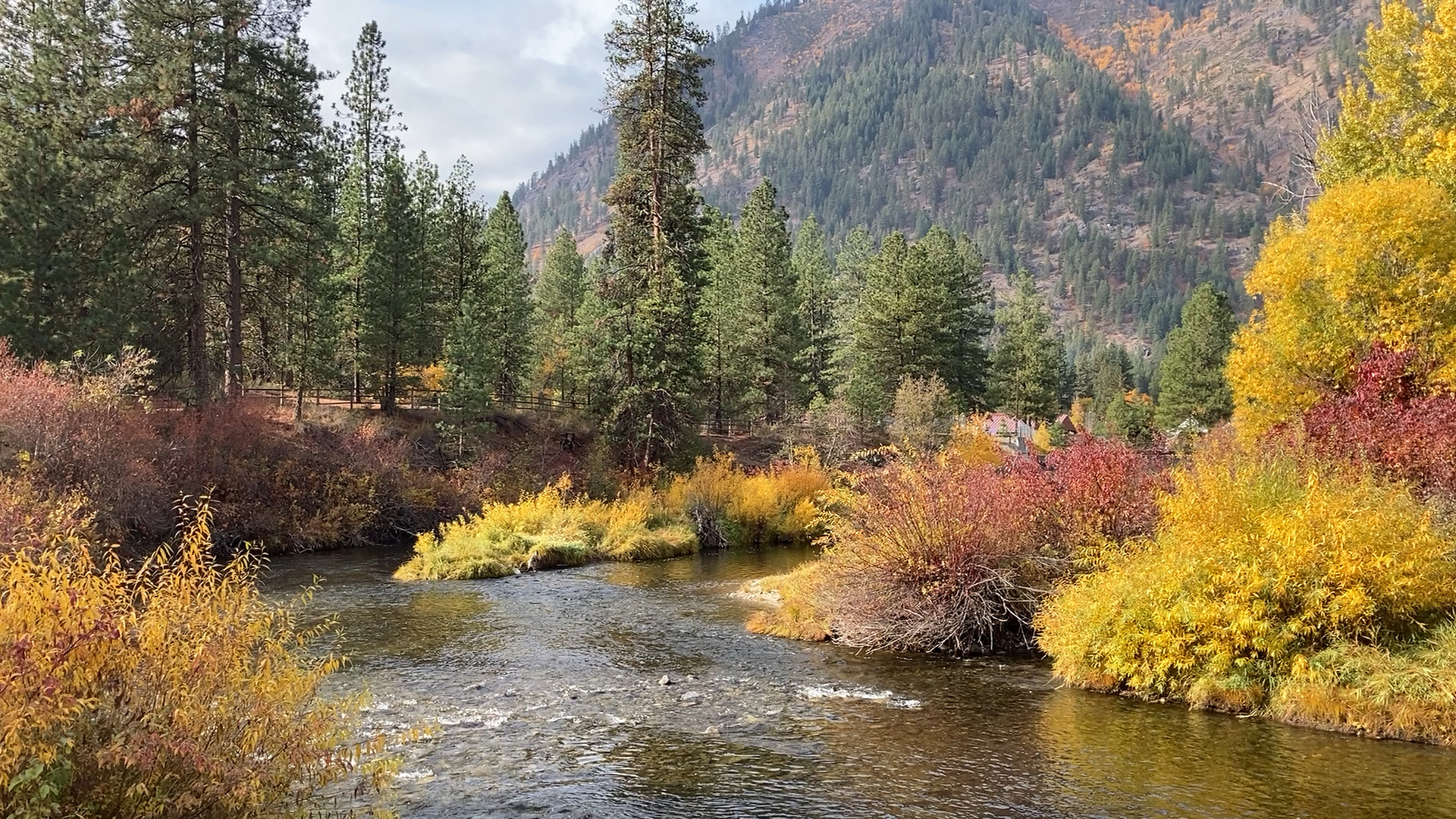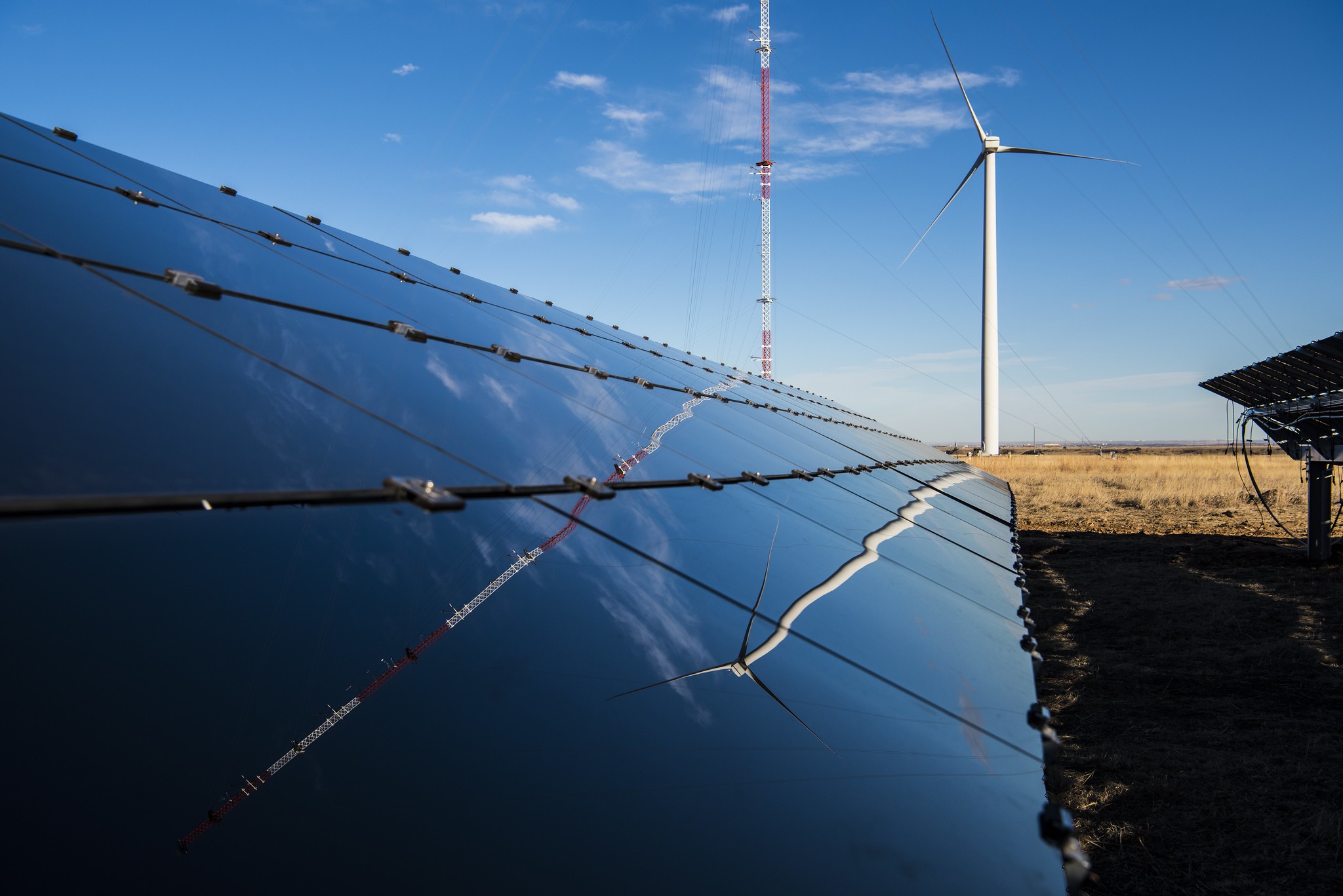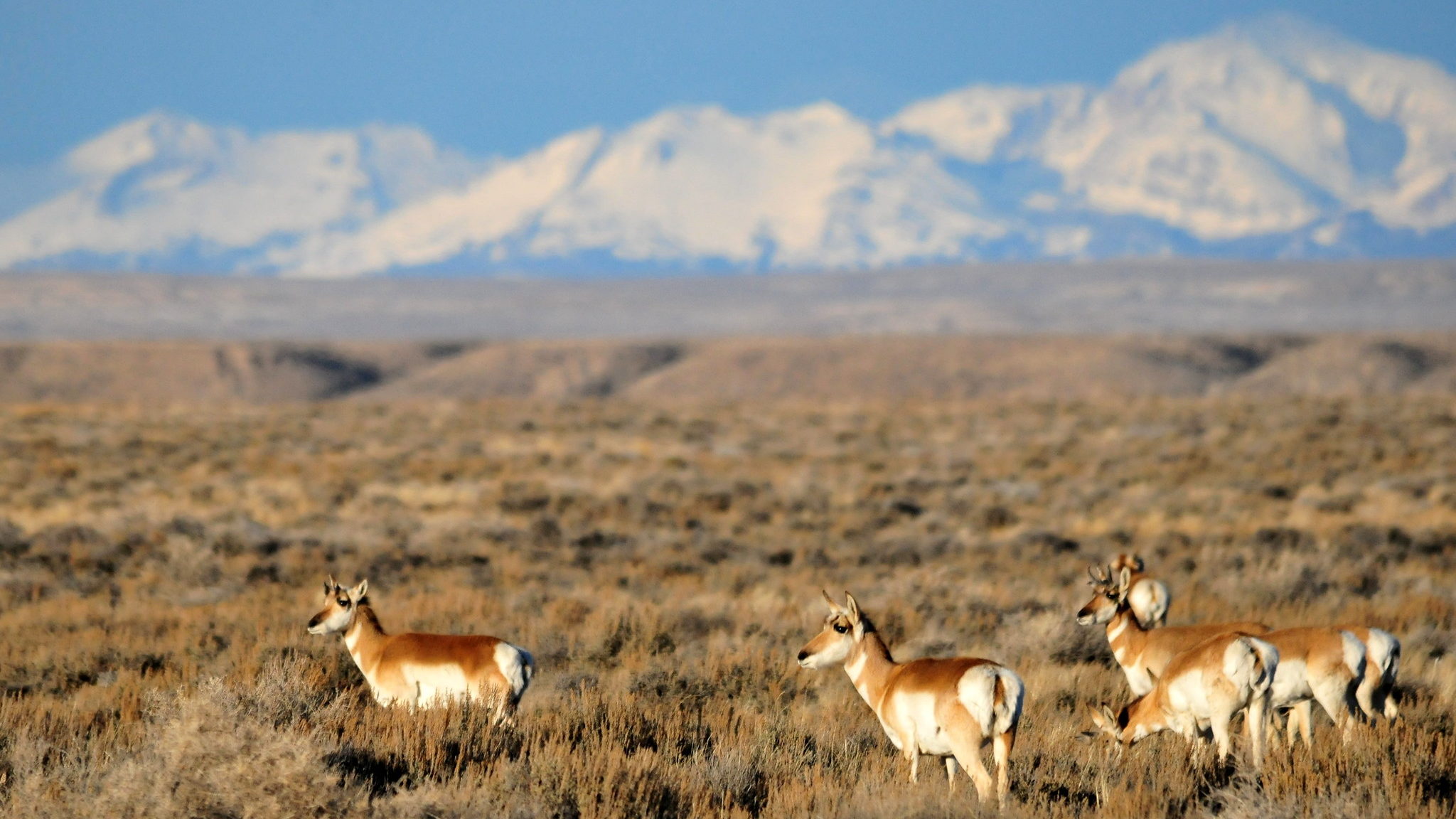We have much more to do and your continued support is needed now more than ever.
Climate, Wildlife, and Justice in the Build Back Better Act

In November 2021, the House of Representatives passed the Build Back Better Act, a sweeping legislative package that would enact a broad range of items including transformational investments in climate action and a clean, resilient future for every community. These investments are a key step to putting us on the path to dramatically reduce emissions by 2030, and are designed to ensure that resources reach the communities that need them most.
However, the Build Back Better Act has yet to pass, making this a crucial period to show support for provisions that restore nature, reduce emissions, and build healthy communities. Below, you’ll find highlighted programs in the legislation passed by the House that National Wildlife Federation hopes to see included when this legislation becomes law. You can lend your voice to push Congress to get these items over the finish line.
TAKE ACTIONClimate
The Build Back Better Act represents the most significant federal investment in climate action in U.S. history, putting us on the path to meet the country’s international commitment to reduce emissions by 52% by 2030. It does this through a combination of tax credits to help deploy clean energy, support for communities transitioning to clean energy, and natural climate solutions, all of which will result in quality jobs, with a focus on communities that need these investments most.

- Expanding Clean Energy: The House Build Back Better Act contains $267 billion in clean energy tax credits for expanded deployment of solar, wind, and other clean energy sources of power, and $25 billion in tax credits to support the manufacture of clean energy equipment. With a 10-year duration and added flexibility for claiming them, these credits represent a truly historic investment in clean energy to supercharge the transition to clean generation. Additionally, full credit value is tied to strong labor standards to help ensure the millions of jobs created will be good, life-sustaining ones.
- Reducing Greenhouse Gas Pollution: The Build Back Better Act will create a Greenhouse Gas Reduction Fund, also referred to as a Green Bank or Clean Energy Accelerator. This program would invest $27 billion in clean energy and energy efficiency projects that otherwise would have difficulty accessing finance. Forty percent of the funding is directed at low-income and environmental justice communities.
- Reducing Methane Emissions: Methane is 80 times more potent as a greenhouse gas than carbon dioxide over a 20-year window. The bill establishes a new Methane Emissions Reduction Program with $750 million to help oil and gas companies to reduce their methane emissions. It would also charge companies for leaks over certain thresholds.
- Capturing and Storing Carbon Pollution: Carbon capture, utilization, and storage is a process for capturing carbon dioxide emissions from sources like coal-fired power plants to either reuse or store it so that it will not enter the atmosphere. Direct air capture is a method for removing carbon dioxide from the atmosphere. There is already more carbon dioxide in the atmosphere than scientists say is safe — which is why carbon capture technologies like carbon capture, utilization and storage and direct air capture are necessary tools to avoid the worst impacts of climate change. In 2018, Congress passed a tax credit, often referred to as “45Q” to expand the use of these technologies. The Build Back Better Act builds on 45Q by providing a direct payment option, plus credits for direct air capture that will support industry investment in the infrastructure and technology to support widespread and cost-effective use of carbon capture technology.
- Electric vehicles, grid modernization, and home/building efficiency: In addition to tax credits for clean energy generation, the bill also includes incentives and investments in other areas. It expands the tax credit for purchasing electric vehicles to up to $12,500 for new cars, with no caps on eligibility per manufacturer, and $2,500 for buying used electric vehicles. It also provides billions for electric vehicle charging infrastructure. It extends and expands tax credits for energy efficiency improvements in homes and businesses and invests in efficiency in low-income and subsidized housing. Finally, it provides tax credits for constructing and installing transmission lines and energy storage facilities, both of which will be critical for transitioning to a grid powered by renewables.
- Rural Utilities Transition to Clean Energy: The bill provides $9.7 billion to help small, rural utilities retire coal power plants in favor of clean generation.

- Natural Climate Solutions
- Climate-smart Agriculture: The bill contains over $27 billion for U.S. Department of Agriculture (USDA) conservation programs that enable farmers, ranchers, and forest owners to sequester carbon in soils and reduce emissions from agriculture. This funding constitutes the largest investment in agricultural conservation since the Dust Bowl. The bill would provide increased funding for existing USDA conservation programs including the Environmental Quality Incentives Program, the Regional Conservation Partnership Program, the Conservation Stewardship Program, and the Agricultural Conservation Easement Program. These voluntary, effective programs are routinely oversubscribed.
- The bill would also create a new program run by the Farm Service Agency to encourage greater adoption of cover crops, which are non-commodity crops planted in between rows or during fallow periods to improve soil quality and sequester carbon. It would also provide increased funding for conservation technical assistance to provide farmers, ranchers, and forestland owners with the knowledge and tools they need to employ conservation practices that sequester carbon, reduce emissions, and benefit soil, water, and wildlife. You can read more about the Build Back Better Act’s climate smart agriculture investments here.
- Forestry: The Build Back Better Act provides about $27 billion for federal, state, and tribal forests. These funds will be spent on programs that improve wildfire response, prevent wildfires in the first place, protect crucial old-growth stands, and restore forests by planting trees across the country. Combined, these efforts will increase our forests’ capacity to sequester carbon and improve biodiversity by protecting and restoring forest habitat.
- $2.5 billion is also included for the Urban and Community Forest Assistance program, which will increase tree canopy in underserved communities, providing a wide array of climate and co-benefits including improved air quality and fewer urban heat islands.
- Investing in Coastal Communities and Climate Resilience – The bill provides $6 billion for conservation, restoration, and protection of coastal and marine habitats and resources, including fisheries, to enable coastal communities to prepare for extreme storms and other changing climate conditions, and for projects that support natural resources that sustain coastal and marine resource dependent communities through the Coastal Zone Management Act and academic institutions. Importantly, there are no cost share requirements associated with these dollars, helping to ensure they are accessible to more communities. You can find important examples of how coastal restoration and resilience projects protect communities in National Wildlife Federation’s Protective Value of Nature Report, as well as examples of how climate change is fueling the increased threat of disasters across the country in our “Unnatural Disasters” report here.
Justice
If Congress is truly going to build back better, its investments need to reach communities that bear the burden of pollution-intensive industries and climate-driven disasters, as well as those who have depended on fossil fuels for their prosperity. Many of the climate-focused provisions in the Build Back Better Act include language that directs funding to these communities, in line with the goals of President Biden’s Justice40 Initiative, but here are some programs specifically designed to lift up disadvantaged communities and ensure that all communities can enjoy clean air, clean water, and economic opportunity in a clean economy:
- Environmental and Climate Justice Grants: This grant program will provide support for community led projects that work toward reducing pollution, improving public health, and climate-readiness in disadvantaged communities.
- Clean Drinking Water: The House Build Back Better Act makes critical investments in water infrastructure, taking us one step closer towards ensuring access to clean, safe, affordable water for communities across the country. It prioritizes repairing and upgrading outdated drinking water infrastructure by providing over $9 billion to help replace lead service lines in disadvantaged communities and rural areas.
- Stormwater and Wastewater Assistance: The Build Back Better Act also invests more than $2 billion in America’s wastewater and stormwater infrastructure, including $225 million in assistance to help families struggling to afford water and wastewater bills and nearly $2 billion to help local communities address stormwater and wastewater overflows that pollute local waters.
- Affordable Housing & Community Development Programs: This bill includes $150 billion in funding for affordable housing and community development to help create and preserve affordable, equitable, and accessible housing. This includes investments in public housing, first-generation homebuyers’ down payment assistance, support for projects that increase energy efficiency, water efficiency, or climate resilience of affordable housing, and other provisions.
- Assisting Communities in Transitioning from Polluting Industries: To support a just transition away from an economy built on polluting industries, Economic Development Administration Economic Transition funds will provide assistance, including grants for technical assistance, planning, and pre-development activities, to communities transitioning away from polluting energy and industrial activities.
Wildlife
While emissions reductions and natural climate solutions have clear benefits for wildlife, this bill goes a step further with direct investments in wildlife conservation and habitat restoration.
- U.S. Fish and Wildlife Service Wildlife Conservation: The bill contains $200 million for the U.S. Fish and Wildlife Service to help recover endangered and threatened species – including mussels, desert fish, and other vulnerable but often overlooked groups of species.
- Corridor Mapping: As climate change and human development disrupt and fragment wildlife habitats, connections between remaining habitat are more important than ever. This bill provides $10 million for the agency to conduct wildlife corridor mapping and conservation and improve habitat connectivity for animals like the pronghorn.

- Grassland Restoration: America’s grasslands have huge potential for carbon sequestration, and they are a haven for iconic bird and pollinator species, yet they face continued threats from development. This bill provides $40 million for the agency to carry out grassland restoration and protection.
- Pacific Salmon Restoration: The bill provides funding for the National Oceanic and Atmospheric Administration to carry out conservation and restoration work supporting Pacific salmon and steelhead populations and the waters they depend on.
These are just a few highlights of Build Back Better Act provisions that the National Wildlife Federation hopes to see become law. Again, Congress needs to hear from you to show that the package has strong support from wildlife advocates across the country.
TAKE ACTION




















